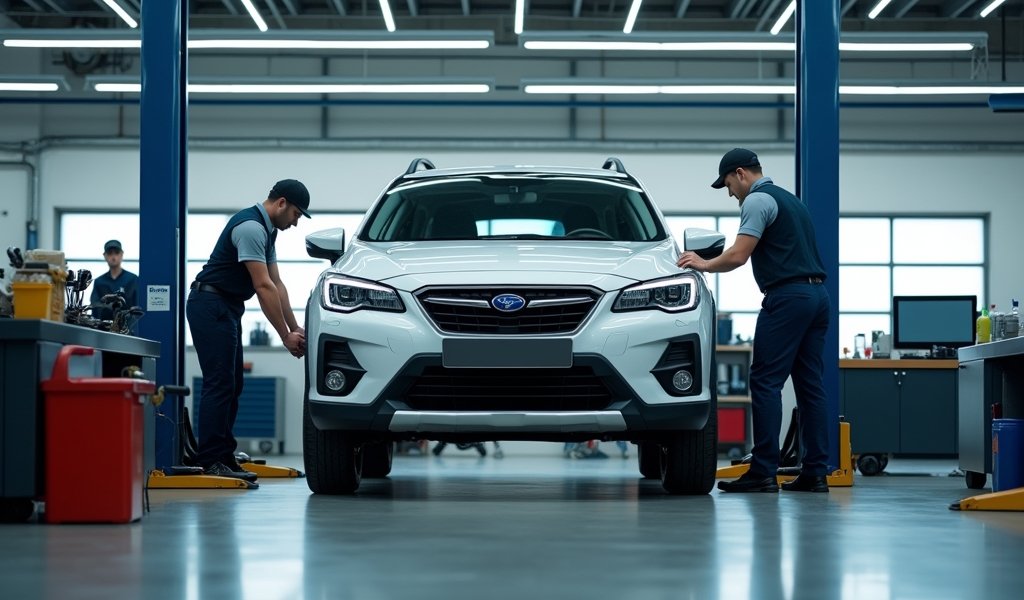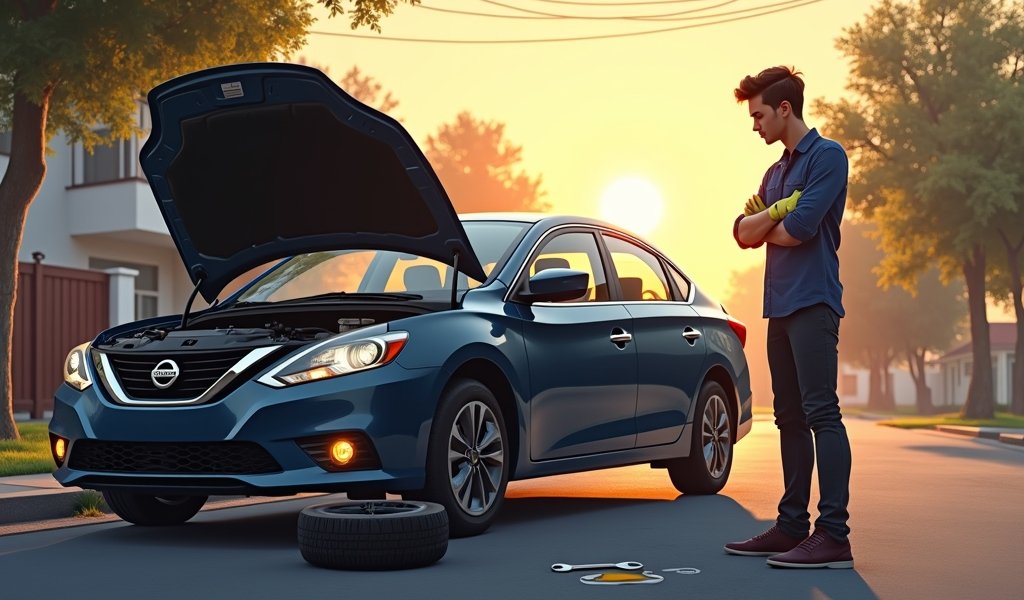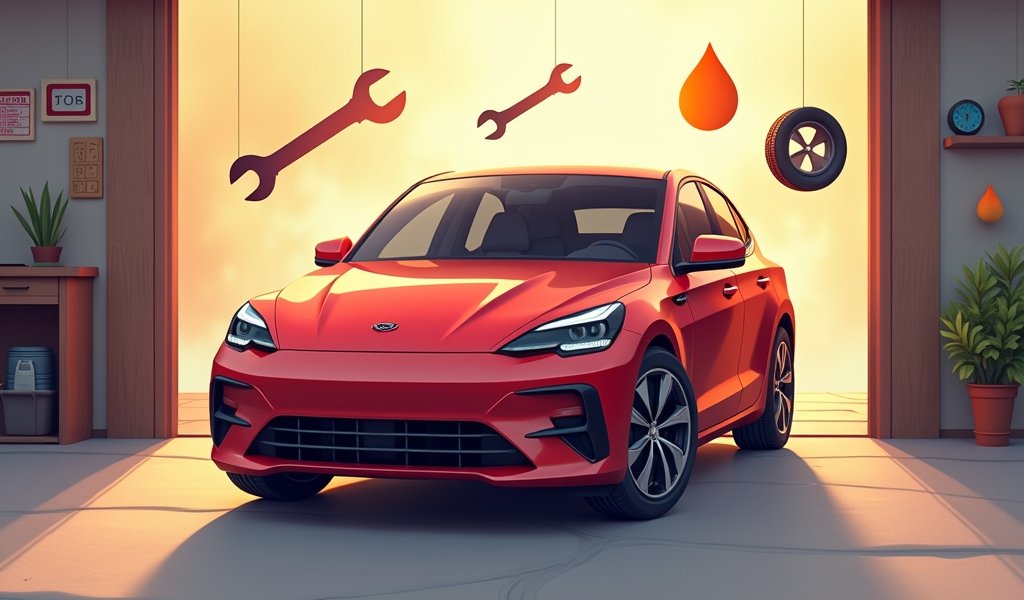Overview
This article provides seven essential car maintenance hacks for new drivers, covering fluid checks, tire maintenance, filter replacement, battery care, brake inspection, dashboard warning lights, and emergency kit preparation. Regular vehicle maintenance is presented as critical for safety, reliability, and cost savings, with practical steps beginners can follow without mechanical expertise.
Table of Contents
- Introduction to Car Care for Beginners
- Why Regular Maintenance Matters
- Hack #1: Master the Art of Fluid Checks
- Hack #2: Proper Tire Maintenance
- Hack #3: Filter Replacement Schedule
- Hack #4: Battery Care and Testing
- Hack #5: Understanding Brake Health
- Hack #6: Knowing Your Light Signals
- Hack #7: Building Your Emergency Kit
- Conclusion
- Frequently Asked Questions
Introduction to Car Care for Beginners
Congratulations on your new set of wheels! As a new driver, learning car care tips for new drivers isn’t just about keeping your vehicle looking good—it’s about safety, reliability, and saving money in the long run. Having spent over 20 years under the hood, I’ve seen how proper maintenance can extend a vehicle’s life by years. The good news? You don’t need to be a certified mechanic to take good care of your car.
Throughout my career, I’ve noticed that new drivers who implement basic maintenance habits early tend to develop a healthier relationship with their vehicles. These habits become second nature, preventing many common roadside emergencies that I frequently get called to fix. In this guide, I’ll walk you through seven essential car care tips for new drivers that will help keep your car running smoothly for years to come.
Whether you’re driving a brand-new vehicle or a reliable used car, these maintenance hacks apply across the board. The beauty of routine vehicle maintenance is its simplicity—small, consistent actions yield significant long-term benefits. Let’s get your hands a little dirty (figuratively, mostly) and build your car care confidence!
Why Regular Maintenance Matters
Before diving into specific maintenance hacks, it’s worth understanding why regular car care is so critical. Think of your vehicle as a complex system of interconnected parts—when one component fails, it often creates a domino effect. I’ve seen too many $50 problems turn into $2,000 repairs simply because they were ignored.
Regular maintenance isn’t just about preventing breakdowns—it’s about safety. Well-maintained brakes respond better in emergency situations. Properly inflated tires provide better traction in poor weather. Working lights ensure visibility on dark roads. These aren’t luxuries; they’re necessities.
There’s also a significant financial incentive to proper car care. According to AAA research, the average annual cost of vehicle ownership is around $9,282, with a substantial portion going toward repairs and maintenance. Regular preventative care can reduce these costs dramatically.
Finally, proper maintenance preserves your vehicle’s value. When the time comes to sell or trade in your car, a well-documented maintenance history can increase its resale value by hundreds or even thousands of dollars. It’s one of the best investments you can make in your vehicle.

Hack #1: Master the Art of Fluid Checks
Your car relies on several crucial fluids to function properly, and checking them regularly is perhaps the simplest yet most effective maintenance hack you can master. I recommend establishing a monthly fluid check routine—it takes less than 10 minutes but can prevent catastrophic damage.
Start with your engine oil, the lifeblood of your vehicle. When your engine is cool, remove the dipstick, wipe it clean, reinsert it fully, then check the oil level and color. It should be between the minimum and maximum marks and appear amber to light brown. Black, gritty oil needs changing immediately.
Next, check your coolant level in the translucent reservoir (never open a hot radiator cap!). The level should fall between the “min” and “max” lines when the engine is cool. Low coolant levels can lead to overheating—a common cause of roadside breakdowns I encounter, especially during summer months.
Other Essential Fluids to Monitor
- Brake fluid: Should be clear to slightly yellow and at the “full” mark
- Power steering fluid: Should be at the appropriate level on the dipstick or reservoir
- Windshield washer fluid: Keep this topped up, especially during winter and bug season
- Transmission fluid: On many newer cars, this is sealed and checked only during professional service
One of my favorite tips for new drivers is to create a simple checklist for car service procedures and keep it in your glove compartment. Mark the date each time you check your fluids, and you’ll develop a valuable record of your vehicle’s health patterns. This small habit has saved countless customers from expensive repairs over my years in the shop.
Hack #2: Proper Tire Maintenance
Your tires are literally where the rubber meets the road, and proper tire maintenance is crucial for safety, fuel efficiency, and extending tire life. I’ve seen too many preventable accidents caused by neglected tires, so let’s focus on keeping yours in optimal condition.
First, invest in a quality tire pressure gauge and check your tire pressure monthly and before long trips. The correct pressure isn’t the maximum PSI printed on the tire—it’s the recommendation listed on the driver’s door jamb sticker or in your owner’s manual. Proper inflation can improve your gas mileage by up to 3% according to the U.S. Department of Energy.
Tire rotation is another critical maintenance task that many new drivers overlook. Having your tires rotated every 5,000-7,000 miles ensures even wear patterns and maximizes tire life. Front and rear tires wear differently due to steering, braking, and weight distribution—rotation equalizes this wear.
The penny test is a simple way to check tread depth. Insert a penny with Lincoln’s head upside down into your tire tread. If you can see all of Lincoln’s head, your tread depth is less than 2/32 of an inch, and it’s time for new tires. I recommend replacing tires when tread reaches 4/32 inch for safer wet-weather driving.
Finally, don’t forget to check for signs of uneven wear, bulges, cracks, or objects embedded in the tread during your monthly inspection. These can indicate alignment issues or potential tire failure that should be addressed promptly. Remember, your tires are an investment in your safety—treat them accordingly.
Hack #3: Filter Replacement Schedule
Your car uses several filters to keep contaminants out of critical systems, and replacing them on schedule is one of the most overlooked aspects of vehicle maintenance. As I tell my customers, filters are like the gatekeepers of your car—when they get clogged, performance suffers and damage can follow.
The engine air filter prevents dust, debris, and contaminants from entering your engine. A clogged air filter can reduce fuel efficiency and engine performance. I recommend checking it every 6 months and replacing it annually or every 15,000-30,000 miles, depending on your driving conditions. If you drive on dirt roads or in dusty areas, you’ll need more frequent replacements.
The cabin air filter, often forgotten but equally important, keeps the air inside your car clean. It traps pollen, dust, and other airborne particles that would otherwise end up in your lungs. Replace this filter every 15,000-25,000 miles or if you notice reduced airflow from your vents or persistent odors.
The fuel filter keeps contaminants from reaching your engine’s fuel injectors. On most newer vehicles, this is part of the fuel pump assembly and doesn’t require regular replacement. However, on older vehicles, replacing it every 30,000 miles can prevent fuel system issues and expensive repairs.
Perhaps most crucial is the oil filter, which should be changed with every oil change. No matter how premium your engine oil is, it can’t do its job properly if it’s flowing through a clogged filter. Implementing these essential car maintenance tips will significantly extend your vehicle’s life span.

Hack #4: Battery Care and Testing
Nothing ruins your day quite like a car that won’t start, and in my experience, battery issues are among the most common culprits. The good news is that with some basic care and attention, you can extend your battery’s life and avoid those frustrating no-start situations.
Modern car batteries typically last 3-5 years, but extreme temperatures, short trips, and electrical accessories can significantly reduce that lifespan. I recommend having your battery tested annually after it’s three years old. Most auto parts stores offer free battery testing, which measures your battery’s voltage and cold cranking amps (CCA).
Keep your battery terminals clean and tight. Corrosion (that white, powdery substance that accumulates on terminals) can prevent proper electrical connection. If you notice corrosion, disconnect the battery (always negative terminal first, positive terminal second), and clean the terminals with a mixture of baking soda and water using an old toothbrush. Rinse with clean water, dry thoroughly, and reconnect (positive first, then negative).
If you don’t drive your car regularly, consider using a battery maintainer (also called a trickle charger). These devices provide just enough power to keep your battery charged without overcharging it. For just $20-40, a battery maintainer can add years to your battery’s life—especially in cold climates.
Listen to your car during starting. If you notice slow cranking or dimming lights when you turn the key, these are early warning signs of battery issues. Addressing them promptly can prevent being stranded with a completely dead battery. Taking these simple steps will help ensure your battery delivers reliable performance throughout its expected lifespan.
Hack #5: Understanding Brake Health
Your braking system is arguably the most important safety feature in your vehicle, and knowing how to monitor its condition is essential for any new driver. Throughout my career, I’ve seen the consequences of neglected brakes, and they’re often both dangerous and expensive.
Learn to recognize the warning signs of brake wear. Squealing or grinding noises, vibration when braking, a soft or spongy brake pedal, or your car pulling to one side during braking all indicate potential issues. If you experience any of these symptoms, have your brakes inspected immediately—your safety depends on it.
While a complete brake inspection requires removing the wheels, you can perform a visual check of your brake pads on many vehicles. Look through the spaces between your wheel spokes to see the brake pad pressed against the rotor. The pad material should be at least ¼ inch thick. If it appears thinner or you see metal, schedule service right away.
Check your brake fluid level monthly along with your other fluid checks. The reservoir is typically located near the back of the engine compartment on the driver’s side. The fluid should be between the “min” and “max” lines and should appear clear to amber in color. Dark fluid indicates it’s time for a brake fluid flush—typically recommended every 2-3 years.
Remember that brake components work as a system—pads, rotors, calipers, and hydraulics all depend on each other. Neglecting one component can cause premature wear or failure in others. Following the brake inspection schedule in your owner’s manual can prevent cascading damage and keep your stopping power optimal.
Hack #6: Knowing Your Light Signals
Your car’s dashboard warning lights are its way of communicating with you, but for many new drivers, they might as well be speaking a foreign language. Understanding these signals can help you address problems before they become serious—and potentially save you from expensive repairs.
The most urgent is the red oil pressure warning light. If this illuminates while driving, pull over safely as soon as possible and shut off the engine. Continuing to drive with low oil pressure can destroy your engine in minutes. Check the oil level when the engine cools, and if it’s low, add oil. If the level is normal but the light persists, have your vehicle towed to a mechanic.
Similarly, the engine temperature warning demands immediate attention. Pull over, turn off the engine, and allow it to cool completely before checking coolant levels. Never open a hot radiator cap—the pressurized coolant can cause severe burns. Low coolant is often the culprit, but persistent overheating might indicate a failed water pump, thermostat, or head gasket.
The check engine light (CEL) is perhaps the most misunderstood. While it doesn’t usually require immediate action, it shouldn’t be ignored either. A steady CEL indicates a problem that should be checked within a reasonable time, while a flashing CEL indicates a severe issue that could damage your catalytic converter—requiring immediate attention.
Other lights like ABS, traction control, or tire pressure monitoring system (TPMS) typically indicate systems that need attention but aren’t immediately dangerous. These should be addressed at your earliest convenience. I recommend keeping a small notebook in your glove compartment to record when warning lights appear and under what circumstances—this information is invaluable to your mechanic during diagnosis.
Hack #7: Building Your Emergency Kit
Even with perfect maintenance, emergencies can happen. After 20 years of roadside assistance, I’ve seen firsthand how a well-prepared driver can transform a potential disaster into a minor inconvenience. Every vehicle should have a basic emergency kit—it doesn’t need to be elaborate, but it should be complete.
Start with safety essentials: a flashlight with extra batteries, reflective triangles or flares, a high-visibility vest, and a first-aid kit. These items ensure you remain safe while dealing with a breakdown, especially at night or in poor visibility. I recommend LED flashlights—they’re brighter and the batteries last significantly longer.
Include basic tools: adjustable wrench, screwdrivers (Phillips and flathead), pliers, tire pressure gauge, and duct tape. Add jumper cables or, better yet, a jump starter power pack. Modern jump starters are compact, hold their charge for months, and eliminate the need for another vehicle to jump-start yours.
Don’t forget seasonal essentials. In winter, include a blanket, hand warmers, snow brush/ice scraper, and a small shovel. Summer kits should have extra water, sunscreen, and perhaps a sun shade. Year-round, keep non-perishable snacks, a phone charger, and a small amount of cash for emergencies.
Finally, know how to use everything in your kit before you need it. Practice changing a tire in your driveway rather than learning on the side of a busy highway. Test your jump starter periodically to ensure it’s charged. Familiarize yourself with your vehicle’s owner’s manual and keep it accessible—it contains specific information about your car that can be invaluable during an emergency.
Conclusion
Mastering these seven car care tips for new drivers will set you up for years of trouble-free driving. Remember that vehicle maintenance isn’t about being a mechanical expert—it’s about developing simple, consistent habits that protect your investment and ensure your safety on the road.
Start small by implementing monthly fluid checks and tire inspections. As these become routine, add the remaining maintenance hacks to your schedule. Use your vehicle’s owner’s manual as a guide for recommended maintenance intervals specific to your make and model. The time you invest in these basic care routines will pay dividends through improved reliability, safety, and lower long-term ownership costs.
Don’t be intimidated by car care. Today’s vehicles are more reliable than ever, but they still need your attention. The relationship between driver and vehicle is a partnership—give your car the care it deserves, and it will provide you with thousands of miles of faithful service. And remember, when in doubt, consult with a trusted mechanic. We’re here to help you keep rolling down the road safely.
By following these car care tips for new drivers, you’re not just maintaining a vehicle—you’re developing a lifelong skill that will serve you well through every car you’ll ever own. Happy driving!
Frequently Asked Questions
How often should new drivers check their oil level?
Check your engine oil level monthly and before long road trips. This five-minute check can prevent catastrophic engine damage and should become a regular habit.
What’s the proper tire pressure for my car?
The proper tire pressure is listed on a sticker inside your driver’s door jamb or in your owner’s manual. Never use the PSI printed on the tire sidewall—that’s the maximum pressure, not the recommended pressure.
How often should I rotate my tires?
Most manufacturers recommend rotating tires every 5,000-7,000 miles. This ensures even wear and extends tire life significantly.
What should I do if my check engine light comes on?
If the light is steady (not flashing), have it checked within a reasonable time. If it’s flashing, reduce speed and have the vehicle inspected immediately as this indicates a severe problem that could damage expensive components.
How can I tell if my battery is going bad?
Warning signs include slow engine cranking, dimming lights during starting, a swollen battery case, or a battery that’s more than 3-5 years old. Most auto parts stores offer free battery testing if you’re unsure.


Pingback: How to Jump Start a Car: The Ultimate 5-Step Guide - knowsyourcar.com
Pingback: car seat cover for pets: Best Protectors - knowsyourcar.com